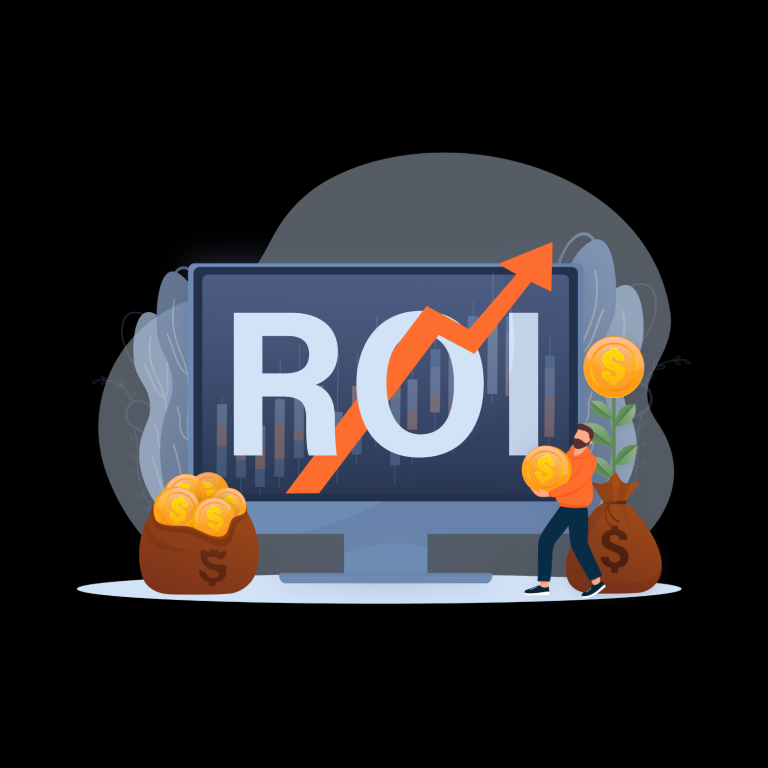What is growth marketing, and how can it benefit your brand?

When it comes to generating significant growth for brands in the fast-paced world of marketing, traditional tactics frequently fall short. Enter growth marketing. A creative and results-driven strategy that has revolutionized the way companies interact with their customers and promote long-term success.
In this article, we’ll examine growth marketing in depth using simple language to make sure you understand the principles and can use them to your business.
Chapter 1: Understanding Growth Marketing
1.1 What Is Growth Marketing, Exactly?
Simply said, growth marketing is about elevating your brand to new heights via the use of creative and flexible tactics. Growth marketing thrives on experimentation, data-driven insights, and an unwavering pursuit of scalable growth, in contrast to traditional marketing, which frequently relies on established tactics.
1.2 How It Differs from Traditional Marketing
Growth marketing takes a more all-encompassing approach than traditional marketing, which often concentrates on brand awareness and customer acquisition. It strongly emphasizes client retention, product optimization, and strategic data analysis in addition to new customer acquisition.
1.3 The Mindset of Growth Marketing
Growth marketing is based on a mindset that values adaptability, flexibility, and a never-ending desire to do better. Successful growth marketers perceive obstacles as chances for experimentation and learning, and they are always prepared to change course when necessary.

Chapter 2: The Key Components of Growth Marketing
2.1 Data-Driven Decision Making
The compass for the growth marketing journey is data. It helps marketers comprehend patterns, spot bottlenecks, and hone their tactics for the greatest possible impact. Growth marketing is built on the fundamental tenet of data-driven decision-making.
2.2 Customer-Centric Approach
Customers are at the center of growth marketing strategies. They focus their efforts on creating tailored experiences that encourage loyalty and retention by carefully examining the behavior, preferences, and pain points of their customers.

2.3 Testing and Experimentation
Testing is at the heart of growth marketing. To determine which approaches resonate most strongly with their target audience, marketers continually test new concepts and ideas. This iterative methodology promotes continual development.
2.4 Automation and Scalability
Scalability is a consideration in the creation of growth marketing tactics. By streamlining monotonous work using automation solutions, teams can concentrate on high-impact activities and support quick growth.
2.5 Cross-Functional Collaboration
Collaboration is essential to effective growth marketing. Collaboration between several departments within a business helps to ensure alignment and synergy across the board by sharing insights, ideas, and plans.

Chapter 3: Building Your Growth Marketing Strategy
3.1 Establishing Specific Goals
Understanding your goals clearly is crucial. Setting specific objectives gives you direction and enables you to assess your success as you go.
3.2 Recognizing Your Target Market
You must have a thorough understanding of your audience in order to engage with them. They, who? What are they after? With this knowledge, you may adjust your marketing strategies to meet their unique requirements and preferences.
3.3 Customer Journey Mapping
The customer journey resembles a road plan that will lead to the success of your brand. Growth marketers carefully plot this path, assuring a seamless transition from one stage to the next, which results in clients who are devoted and satisfied in the end.
3.4 Choosing the Proper Marketing Channels
Growth marketers are selective in their channel selections because not all marketing channels are made equal. To maximize their influence, they carefully choose the channels that best fit their brand and target demographic.
3.5 Producing Interesting Content
Your brand and your audience are connected by your content. The material you create, whether it’s a blog post, a social media update, or a video, should connect with your audience, encourage participation, and motivate action.
Chapter 4: Executing Your Growth Marketing Plan
4.1 Customer Acquisition Strategies
Learn effective methods for attracting new clients to your business by concentrating on strategies aligning with your goals and target market.
4.2 Strategies for Customer Retention
Maintaining your current clientele’s engagement and loyalty is as important as attracting new consumers. We look at methods for establishing enduring connections with customers.

4.3 Conversion Rate Optimization (CRO)
Not all website visitors become customers. Learn how to optimize your website to increase conversion rates and turn browsers into buyers.
4.4 A/B Testing and Optimization
A/B testing allows you to fine-tune your strategies by comparing two versions of a campaign to determine which performs better. We delve into how to conduct these tests and leverage the results for continuous improvement.
4.5 Analyzing Data for Insights
The process of data analysis is continual in growth marketing. Learn how to derive useful insights from data to guide strategic changes and decision-making.

Chapter 5: Measuring Success
5.1 Key Performance Indicators (KPIs) in Growth Marketing
The compass by which you navigate your growth marketing journey is a set of key performance metrics. We outline key KPIs and describe how they assist you in monitoring your development and performance.
5.2 Tools for Tracking and Analytics
Learn about the systems and technologies that make monitoring and analytics simple, making it simpler to keep track of the success of your marketing initiatives.
5.3 Assessing ROAS and ROI
The measures of return on investment (ROI) and return on ad spend (ROAS) are crucial for determining how well your marketing initiatives are working. We offer advice on how to measure and improve these important KPIs.
Chapter 6: Case Studies of Effective Growth Marketing Campaigns
Discover actual case studies of businesses that have used growth marketing techniques to achieve outstanding outcomes. Among the exciting examples we look at are Dropbox’s referral engine, Spotify’s tailored suggestions, and Airbnb’s rapid growth.
Chapter 7: Growth Marketing Challenges and Pitfalls
Growth marketing has its share of difficulties. We talk about typical roadblocks and hazards, like avoiding burnout, finding the ideal balance between short-term and long-term objectives, and dealing with ethical issues in marketing.
Chapter 8: Growth Marketers’ Tools and Resources
Learn about the crucial resources and technologies that growth marketers need, including marketing automation systems, customer relationship management (CRM) programs, and analytics tools.
Chapter 9: Growth Marketing in the Future
Discover how artificial intelligence, voice search optimization, and hyper-personalization will affect growth marketing in the future. Examine how changing trends will affect the marketing environment.
Chapter 10: Adopt Growth Marketing for Your Brand
In our final chapter, we highlight growth marketing’s potential to change your brand and outline the main lessons learned from it. We stress the value of flexibility in the constantly changing world of marketing and provide you with practical advice for starting your growth marketing journey.

Conclusion
Though it may sound complicated, growth marketing’s core principles include strategic adaptability, client centricity, and a dedication to ongoing improvement. You can harness the power of growth marketing to catapult your company to unparalleled success in today’s competitive marketplace by comprehending your audience, establishing clear objectives, and experimenting with data-driven techniques. Accept this innovative strategy, and see your brand flourish like never before.
